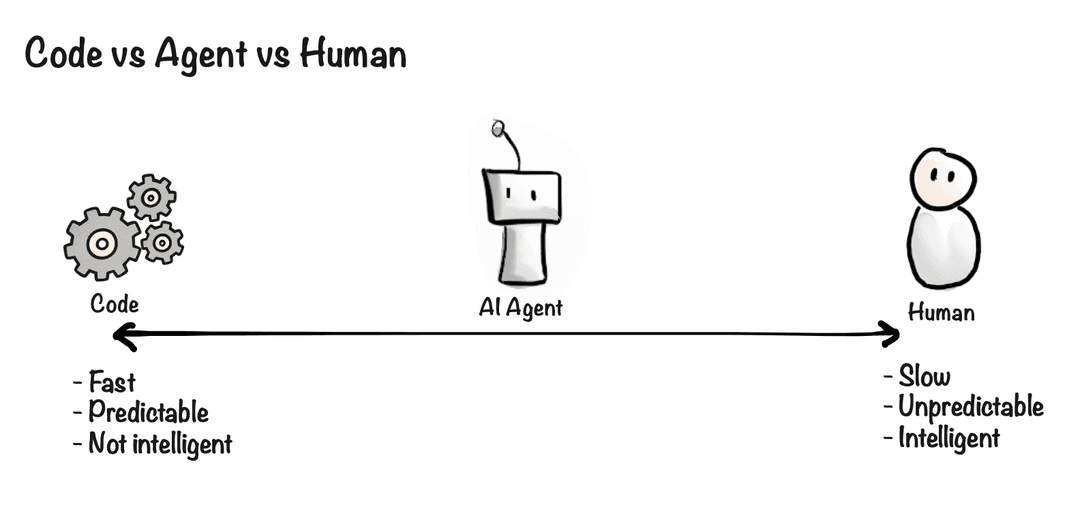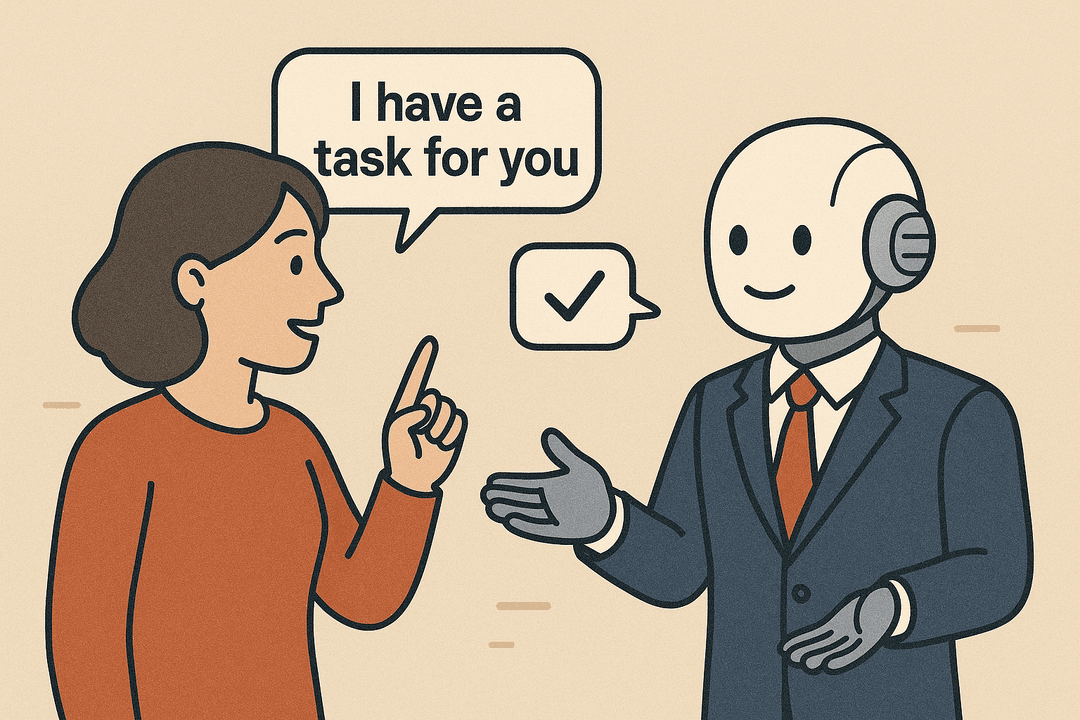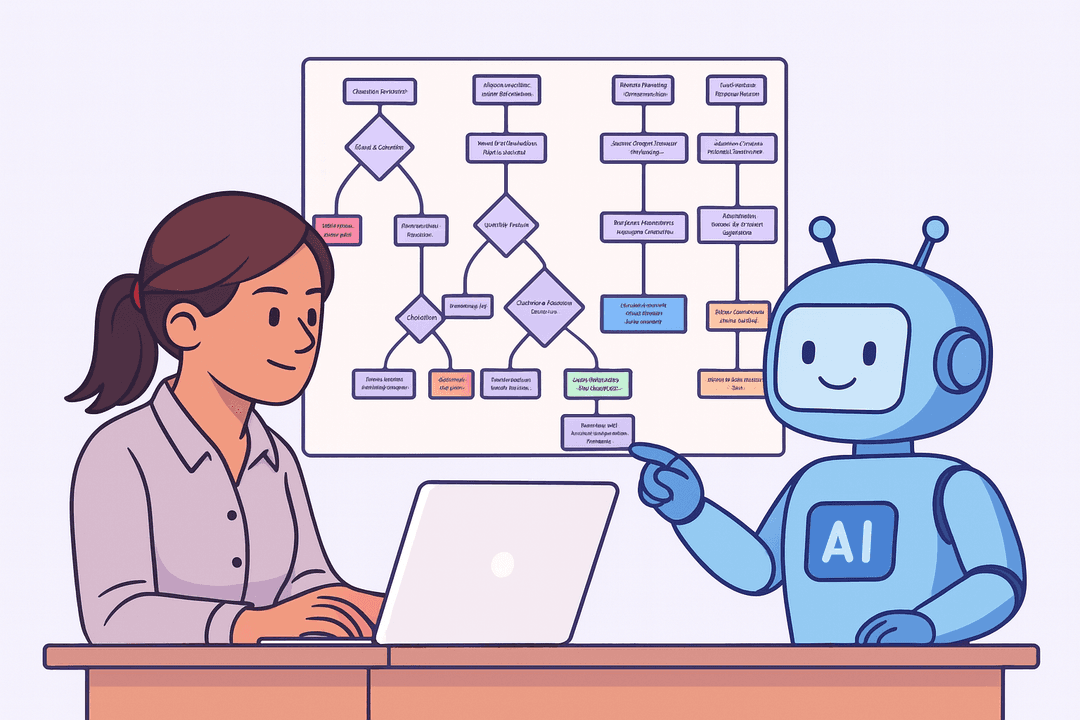The AI Agent Design Canvas: How We Design AI Agents That Actually Work
In this article
The AI Agent Design Canvas: A structured framework for designing AI agents that actually work. Learn from real implementations.
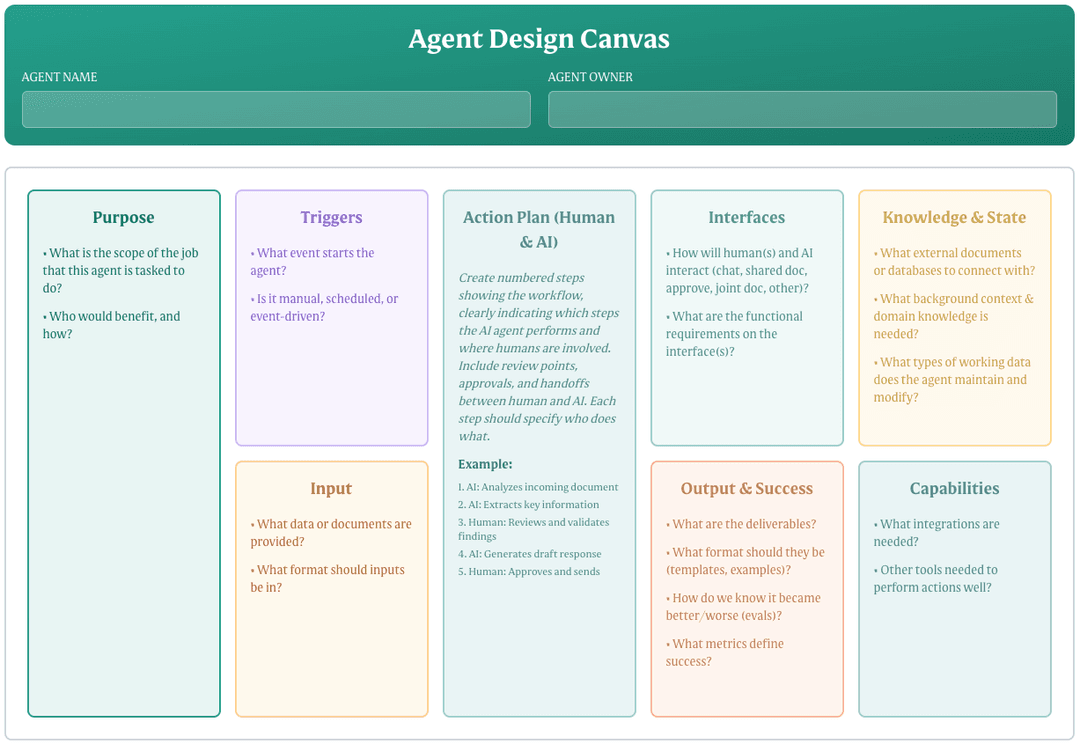
After delivering 50+ AI agents that are running in real businesses today, we've learned something critical: the difference between an agent that provides real value and one that falls short isn't usually about the technology. It's about the design.
Most people jump straight into building. They have an idea for what an agent should do, start building, fall into a black hole somewhere along the way, and can’t dig themselves out of a sub-process that didn’t work. Sometimes the jump-straight-in approach can result in something useful. But most of the time it doesn't and when that happens, they get demotivated and think that AI agents are useless.
That's why we created the Agent Design Canvas - a structured framework for thinking through all the key aspects of agent design before you start building.
Why You Need a Design Process
When building without a structured design approach, there are many pitfalls:
- Dumping a lot of information into the agent’s context, which makes the agent confused and leads to low quality output
- The agent works technically, but the human-agent collaboration is so tedious it’s not gonna end up being used in reality
- Forgetting to think about how the agent gets its data, which is a complex process
- The expectations weren’t aligned in the team, so people are disappointed with the result
The Agent Design Canvas prevents these problems by forcing you to think systematically about your agent before investing time in building it. If you use it properly, as a team, it ensures people have the same view of what success looks like.
What Makes a Good Agent Design
Through our work building agents that are continuously used by companies, we've identified the key elements that need to be defined for any successful agent.
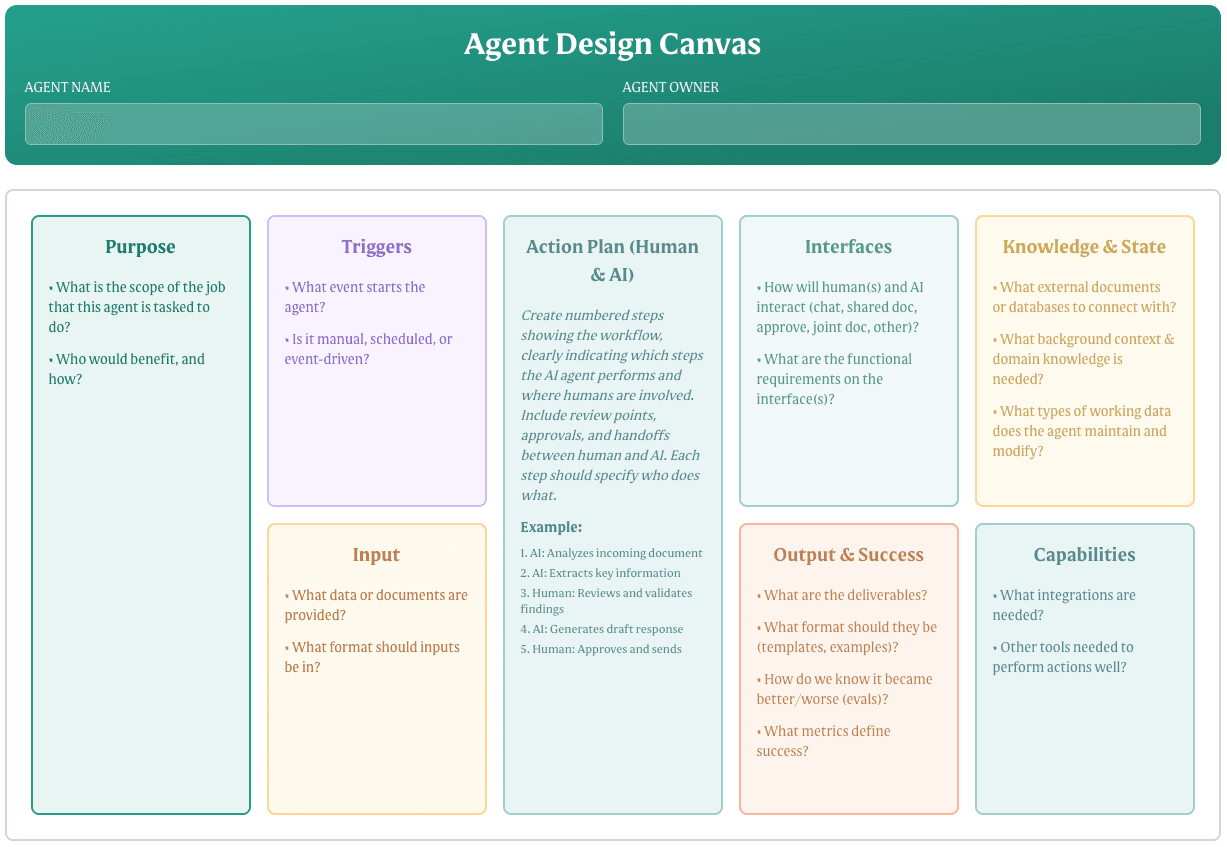
- Purpose: What specific job is this agent doing, and who benefits? Bringing this down from a fluffy idea to a concrete, specific purpose is the foundation for everything else.
- Triggers: What starts the agent? Is it manual, scheduled, or triggered by an event? This determines how the agent fits into existing workflows.
- Input: What data does the agent receive, and in what format? The input can also be thought of as the part of the agent’s context that will be different for every run.
- Action Plan (Human & AI): Create a clear plan with steps that Human and AI handle respectively. Include review points, approvals, and handoffs.
- Interfaces: How do humans and AI interact with each other? Through chat, email or something else? This can sometimes be the difference maker for whether an agent will end up being used in reality.
- Output & Success - What does "done" look like? What format should deliverables be in? How do you measure success?
- Knowledge & State - What external documents or databases does the agent need? What background context is necessary? What working data does it maintain, and will that change (ie the state)?
- Capabilities - What integrations and tools does the agent need to perform its job well?
How to Use the Canvas in Practice
The Agent Design Canvas is primarily for the person who will use the agent. While you can use it individually to structure your thoughts, it becomes most powerful in discussion settings - when several people need to align on the approach, or when a user needs to describe their needs to a builder.
We recommend going straight to a team workshop. Get everyone who needs to be involved in the same room, work through the canvas together, and reach alignment before building anything. This could take anything from 1 to 4 hours, depending on complexity and how well the discussion is moderated. But this time investment upfront saves days or weeks of misalignment later.
AI Agents Are Different From Traditional Software
This connects to a critical insight: AI agents need human feedback to become good. Agents improve through iteration and human guidance. They're more like new team members who need coaching than software that just runs.
This is why the best agent creators aren't IT departments or developers - they're the actual users of the agent. Only the user knows when things change, when the agent's performance has drifted, or when new requirements emerge. The user can keep the agent relevant and continuously improve it, rather than letting it become an obsolete product that nobody maintains.
Common Pitfalls the Canvas Prevents
Through our work, we've seen patterns in what goes wrong without structured design:
Unclear purpose - Teams think they know what the agent should do, but everyone has a slightly different understanding. The canvas forces alignment on a specific purpose before building starts.
Missing the context problem - People either provide too little context (agent doesn't understand the domain) or too much (signal-to-noise ratio drops and quality suffers). The canvas pushes you to think critically about what context is actually necessary.
Undefined success metrics - Without clear success criteria, teams either overwork trying to achieve perfection, or ship something that doesn't actually solve the problem. The canvas ensures everyone agrees on what "done" means. Typically, getting to about 90% is the right target, as the last 10% often takes more effort than it’s worth and might mean over-optimizing for current cases when you want flexibility for future changes.
Human-AI handoffs ignored - The most common oversight is not thinking through the interfaces and collaboration points between humans and AI. This leads to agents that work in theory but don't fit into actual workflows.
Getting Started with the Canvas
We've made the Agent Design Canvas available for anyone to use at abundly.ai/agent-design-canvas.
If you're planning your first agent, we highly suggest using this as a framework to discuss the agent design. And if you want guidance on using it effectively - or help building the agent once you've designed it - we're here to help.
Ready to design your own AI agent? Download the Agent Design Canvas at abundly.ai/agent-design-canvas. And if you want expert guidance designing and building your agent, get in touch - we'd love to help.


